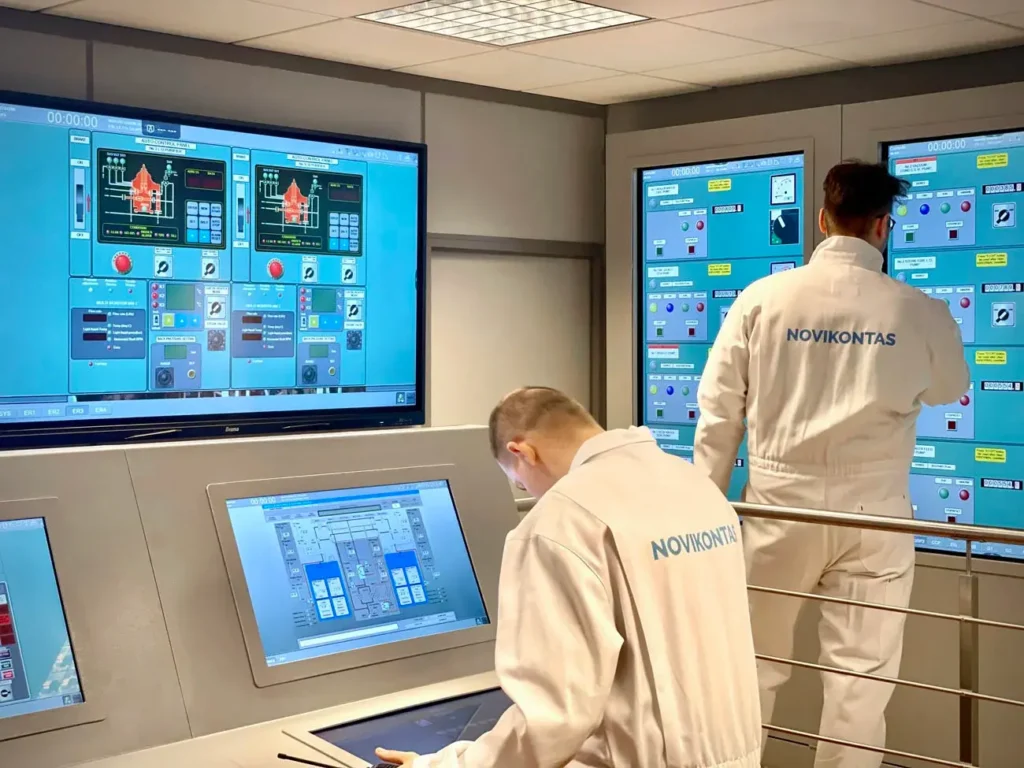What Is Maritime Resource Management?
Maritime Resource Management (MRM) focuses on improving communication, decision-making, and teamwork among a ship’s crew to ensure safe and efficient operations.
It’s a framework used across the maritime industry to reduce accidents caused by human errors, particularly in high-stress situations.
By practicing MRM, seafarers can work together smoothly, avoid miscommunications, and navigate complex situations confidently.
MRM became popular because of its success in the aviation industry as “Crew Resource Management.” Seeing how it reduced accidents in the skies, the maritime industry adapted it for ships, leading to safer seas.
Core Principles of Maritime Resource Management
MRM is built around four main principles:
- Communication must be direct and unambiguous. This includes using phrases everyone understands, ensuring orders are repeated for clarity, and sharing important information in real-time.
- On a ship, every crew member has a role that contributes to overall safety. MRM encourages crews to work closely, respecting each other’s skills and responsibilities, which builds a solid support system for everyone.
- Seafarers are trained to assess situations quickly and choose the best action. This could mean rerouting a ship in rough weather or managing a technical issue with minimal resources.
- This principle emphasizes being aware of everything around the ship—from weather conditions and nearby vessels to the ship’s own systems. Staying alert helps crews respond promptly to any potential danger.
Benefits of Maritime Resource Management
MRM isn’t just about safety; it also makes day-to-day operations more efficient. Here are some key benefits:
MRM drastically lowers the chance of accidents due to misunderstandings or poor decisions. By training crews to communicate clearly, share responsibilities, and stay aware of their surroundings, MRM creates a safer environment for both people and cargo.
When everyone understands their role and can make quick, informed decisions, a ship operates more efficiently. This often translates to reduced fuel costs, fewer delays, and better time management.
Accidents and delays can be very costly for shipping companies. By reducing the risk of these issues, MRM helps save money in the long run.
How Does Maritime Resource Management Work?
MRM works by teaching crews how to communicate and operate as a team under pressure. Here’s a breakdown of how MRM training is applied on board:
- Scenario-Based Drills: Crew members often practice simulated emergencies, like engine failures or bad weather conditions. These scenarios help them respond effectively if they encounter similar problems in real life.
- Routine Communication Practices: MRM encourages daily communication routines, where the captain and crew update each other on important tasks. For instance, a simple confirmation after an order (like repeating instructions back to the captain) can prevent misunderstandings that lead to mistakes.
- Role Awareness: Each crew member knows their specific duties, especially during emergencies. For instance, one officer may be assigned to navigation while another monitors the engine room. This clear division of roles helps ensure no tasks are overlooked.
By following these structured processes, MRM creates a framework for smooth, efficient ship operations.
MRM Training and Certification for Seafarers
To gain MRM skills, crew members go through specialized training, often involving both classroom and practical exercises. This training focuses on essential MRM skills:
- Communication Skills Training: This helps crews speak in ways that are clear and direct, avoiding language that could lead to misunderstandings.
- Decision-Making Exercises: These involve simulated high-pressure situations, helping seafarers make decisions quickly and effectively.
- Teamwork Drills: Team-based activities help each crew member understand their role on the ship and how to support others.
MRM certification is increasingly valued in the maritime industry. Many maritime academies now offer MRM programs as part of their standard training, giving seafarers a valuable credential that shows they’re prepared to handle the challenges of working on a ship.

Common Challenges in Maritime Resource Management
While MRM brings many benefits, it’s not without its challenges:
- Crew members often come from diverse backgrounds and may speak different languages. This can lead to communication difficulties, especially in high-stress situations where time is critical.
- Some experienced seafarers may be set in their ways, making them reluctant to adopt new MRM practices. It takes time and consistent practice to build trust and get everyone on board with these methods.
- Ships are continuously updated with new technology, and adapting MRM practices to work with these advancements can be challenging. For example, new communication systems may require additional training to be used effectively.
Despite these challenges, many maritime companies prioritize MRM training because the long-term benefits far outweigh the initial obstacles.
History of Maritime Resource Management
MRM got its start in the aviation industry under the name “Crew Resource Management” (CRM). Pilots needed a way to reduce human errors and improve safety, so CRM was created to help them communicate, work as a team, and make better decisions.
After proving its effectiveness, the maritime industry adapted CRM into what’s now known as MRM.
Since then, MRM has grown and evolved. Modern MRM includes advanced technologies and new training techniques to meet the needs of today’s complex maritime operations. It’s become a standard part of training for many seafarers, helping them stay safe and efficient on the job.
Conclusion
Maritime Resource Management (MRM) plays a vital role in ensuring safety and efficiency on ships. By focusing on core principles like communication, teamwork, decision-making, and awareness, MRM helps crew members avoid mistakes and handle challenges effectively. For seafarers, learning these skills through MRM training is essential to performing well and keeping everyone on board safe.
Whether it’s managing routine tasks or handling unexpected situations, MRM provides the framework for a smooth operation, allowing every crew member to work together with confidence.



